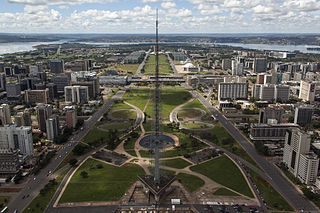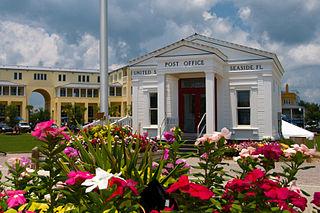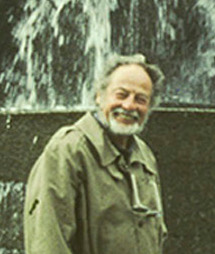
Urban design is the process of designing and shaping the physical features of cities, towns, and villages and planning for the provision of municipal services to residents and visitors. Although it deals with issues of a larger scale than architecture, it cannot be understood as a wholly separated field of research and design, since the quality of one depends on the quality of the other. In fact, it is this very interdependency, which has been termed relational design by Barcelona-based architect Enric Massip-Bosch, which makes urban design and architecture inextricably linked in many university education programs, especially in Europe. This tendency towards reintegration in architectural studies is also gaining momentum in the USA.

New Urbanism is an urban design movement which promotes environmentally friendly habits by creating walkable neighborhoods containing a wide range of housing and job types. It arose in the United States in the early 1980s, and has gradually influenced many aspects of real estate development, urban planning, and municipal land-use strategies. New urbanism attempts to address the ills associated with urban sprawl and post-Second World War suburban development.
Interaction design, often abbreviated as IxD, is "the practice of designing interactive digital products, environments, systems, and services." Beyond the digital aspect, interaction design is also useful when creating physical (non-digital) products, exploring how a user might interact with it. Common topics of interaction design include design, human–computer interaction, and software development. While interaction design has an interest in form, its main area of focus rests on behavior. Rather than analyzing how things are, interaction design synthesizes and imagines things as they could be. This element of interaction design is what characterizes IxD as a design field as opposed to a science or engineering field.
Environmental design is the process of addressing surrounding environmental parameters when devising plans, programs, policies, buildings, or products. It seeks to create spaces that will enhance the natural, social, cultural and physical environment of particular areas. Classical prudent design may have always considered environmental factors; however, the environmental movement beginning in the 1940s has made the concept more explicit.

The Wiesner building houses the MIT Media Lab and the List Visual Arts Center and is named in honor of former MIT president Jerome Wiesner and his wife Laya. The building is very box-like, a motif that is consistently repeated in both the interior and exterior design evoking a sense of boxes packed within each other.

Garrett Eckbo was an American landscape architect notable for his seminal 1950 book Landscape for Living.

A Pattern Language: Towns, Buildings, Construction is a 1977 book on architecture, urban design, and community livability. It was authored by Christopher Alexander, Sara Ishikawa and Murray Silverstein of the Center for Environmental Structure of Berkeley, California, with writing credits also to Max Jacobson, Ingrid Fiksdahl-King and Shlomo Angel. Decades after its publication, it is still one of the best-selling books on architecture.

Lawrence Halprin was an American landscape architect, designer and teacher.

Kevin Andrew Lynch was an American urban planner and author. He is known for his work on the perceptual form of urban environments and was an early proponent of mental mapping. His most influential books include The Image of the City (1960), a seminal work on the perceptual form of urban environments, and What Time is This Place? (1972), which theorizes how the physical environment captures and refigures temporal processes.
Landscape planning is a branch of landscape architecture. According to Erv Zube (1931–2002) landscape planning is defined as an activity concerned with developing landscaping amongst competing land uses while protecting natural processes and significant cultural and natural resources. Park systems and greenways of the type designed by Frederick Law Olmsted are key examples of landscape planning. Landscape designers tend to work for clients who wish to commission construction work. Landscape planners analyze broad issues as well as project characteristics which constrain design projects.

Sustainable landscape architecture is a category of sustainable design concerned with the planning and design of the built and natural environments.
Karl Linn was an American landscape architect, psychologist, educator, and community activist, best known for inspiring and guiding the creation of "neighborhood commons" on vacant lots in East Coast inner cities during the 1960s through 1980s. Employing a strategy he called "urban barnraising," he engaged neighborhood residents, volunteer professionals, students, youth teams, social activists, and community gardeners in envisioning, designing, and constructing instant, temporary, and permanent gathering spaces in neighborhoods, on college campuses, and at sites of major conferences and events. "Linn is considered 'Father of American Participatory Architecture' by many academic colleagues and architectural and environmental experts of the National Endowment for the Arts."
Leanne Rivlin is an originator of the Environmental Psychology Doctoral Program at the CUNY Graduate Center in the late 1960s.

Keller Easterling is an American architect, urbanist, writer, and professor. She is Enid Storm Dwyer Professor and Director of the MED Program at Yale University.
Philip E. Agre is a former associate professor of information studies at the University of California, Los Angeles. His new media writing includes the essay, Surveillance and Capture. He was successively the publisher of The Network Observer (TNO) and The Red Rock Eater News Service (RRE). TNO ran from January 1994 to July 1996. RRE, an influential mailing list he started in the mid-1990s, ran for around a decade. A mix of news, Internet policy and politics, RRE served as a model for many of today's political blogs and online newsletters.

William John Mitchell was an Australian-born author, educator, architect and urban designer, best known for leading the integration of architectural and related design arts practice with computing and other technologies.

Walter Hood is Professor and former Chair of Landscape Architecture at the University of California, Berkeley, and principal of Hood Design Studio in Oakland, California. In 2019, Walter Hood was awarded the Macarthur Fellowship, known as the "Genius Grant."
Ecological art is an art genre and artistic practice that seeks to preserve, remediate and/or vitalize the life forms, resources and ecology of Earth, by applying the principles of ecosystems to living species and their habitats throughout the lithosphere, atmosphere, biosphere, and hydrosphere, including wilderness, rural, suburban and urban locations. It is a distinct genre from Environmental art in that it involves functional ecological systems-restoration, as well as socially engaged, activist, community-based interventions. Ecological art also addresses politics, culture, economics, ethics and aesthetics as they impact the conditions of ecosystems. Ecological art practitioners include artists, scientists, philosophers and activists who often collaborate on restoration, remediation and public awareness projects.
Urban informatics refers to the study of people creating, applying and using information and communication technology and data in the context of cities and urban environments. Various definitions are available, some provided in the Definitions section. Urban informatics is a trans-disciplinary field of research and practice that draws on three broad domains: people, place and technology.
Clare Cooper Marcus is a prominent educator in landscape architecture and architecture and a pioneer in the field of social issues in housing, open space design, and healing landscapes.










